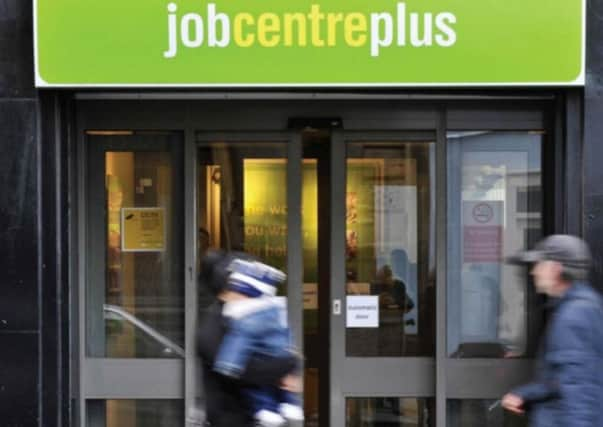North Sea oil crash pushes up number of unemployed Scots


The rate of men out of work helped push the country’s unemployment rate to 6.2 per cent during January and March - above the UK average of 5.1 per cent.
High levels of women leaving Scotland’s labour force have also taken the rate of economic inactivity above UK levels for the first time since 2012.
Advertisement
Hide AdAdvertisement
Hide AdThe latest snapshot of Scotland’s labour market has been published by the Scottish Parliament Information Centre (SPICe).
It found that levels of unemployed men rose by 10,000 over the quarter while the number of unemployed women fell by 2,000.
Now, 104,000 men are unemployed in Scotland - around 7.3 per cent of those able to work.
Scotland now has a higher rate of jobless men than the UK average, which fell to 5.2 per cent over the same quarter.
Professor David Bell, professor of economics at Stirling University, said the oil industry crisis was part of the picture but that the labour market may also have been affected by several large scale construction projects either ending or nearing completion.
He said: “I think oil and gas might be a big part of the story. There have been a number of redundances and many of them will have got a big redundancy payment or package so that may have delayed the effect on their unemployed status.
“Construction has been doing so well that a retrenchment in the industry may happen.
“We have had the building of the Sullom Voe terminal in Shetland and construction of the Forth Road Bridge will come to an end quite soon.
“There has also been dualling of sections of the A9.”
Advertisement
Hide AdAdvertisement
Hide AdProf Bell said both manufacturing and retail had “not been doing well” and may also have impacted the figures.
Just over one in five of Scots (22 per cent) are now classed as economically inactive taking levels slightly over the UK national average for the first time since 2012.
The rise has been driven by 30,000 women and 16,000 men leaving Scotland’s workforce over the first three months of the year, SPICe said.
Prof Bell said it may indicate many women were on the “margins” of whether they can afford to work or not, particularly if hours had been cut or are offered on a part-time basis.
He added: “People may be having to drop out, particularly of part time jobs, because its not worth their while given the cost of being in a job, such as commuting.”
Prof Bell said there had been a few indicators that “things had not being going well” for Scotland’s labour force in recent times.
He added: “Scotland used to be one of the better parts of the UK for employment and had relatively low employment. In the last year or so, Scotland has been seen to be lagging behind the rest of the UK. The evidence is starting to build and that Scotland’s oil industry is clearly one part of the labour market story.”
A breakdown of employment levels by constituency show that Banff and Buchan Coast recorded the biggest drop in employment over 2015 with a loss of 6,200 working people (9.3 per cent).
Advertisement
Hide AdAdvertisement
Hide AdCunninghame South in Ayrshire had an employment drop of 4,300 (9 per cent),Edinburgh Southern by 9,000 jobs (8.1 per cent), Linlithgow by 1,800 (-6.8 per cent).
The figures were drawn from ONS data but concern has been raised over their accuracy given high numbers involved.
Daniel Johnson MSP (Labour) for Edinburgh Southern said the figures were a “cause for concern” and is working with SPICe and ONS given there were “questions” about the data.
A spokesman for the Scottish Government said there are 141,000 more people now working in Scotland compared to the recession low and that the employment rate of 73.1 per cent was the second highest of the four UK nations.
He added that improving women’s position in the workforce was a “key priority” with work also being done to lift 100,000 small businesses out of business rates.
He added: “Scotland continues to be a very attractive location for business growth and inward investment. Just last week the Ernst and Young Attractiveness Survey ranked Scotland second to London for foreign direct investment across the UK, creating over 5,300 jobs in 2015.”
